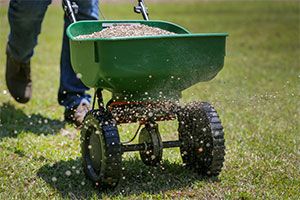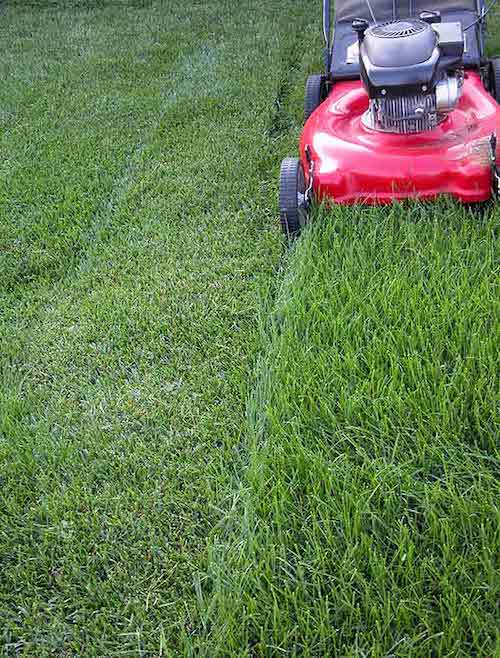Lawn care and sod maintenance are very easy processes that allow you to grow a lush green lawn that you can enjoy for years to come. Below are some ways to ensure adequate care for your new sod.
Step 1: Watering the Sod
It is imperative you douse your sod with water as soon as you lay it, within the first hour at the latest. Watering frequently keeps the delicate roots from drying out, especially if your sod is exposed to full sunlight, and it prevents the sod from shrinking in size. Make sure you water uniformly so it reaches all the way down and becomes soggy. Keep soaking it this way with water for the first two weeks. If temperatures rise or you live in a hot area, you can put sprinklers on every two hours to make sure water penetrates the soil through each panel of sod, especially the edges and the seam. In the summer months, it is always best to water either at night or early morning (when chances of evaporation are minimum). Avoid watering in the evenings, since it may increase the chances of fungus growth. If your sod starts paling in color, it means it is not receiving enough water. Continue watering it thoroughly so it receives moisture and resumes its previous color. Once the sod is well rooted (after a month has lapsed), you can cut back the heavy watering schedule to once every two weeks for a half hour to ensure a slightly moist soil. However, on unusually hot days, you can water twice a day, once in the morning and then at night (for 15 minutes each).
Step 2: Fertilizing the Sod
 You should fertilize your sod with a high phosphorous fertilizer when you are laying it to help give it a healthy start. Fertilize once again on the thirtieth day of installation, and water it immediately to prevent the sod from getting burnt.
You should fertilize your sod with a high phosphorous fertilizer when you are laying it to help give it a healthy start. Fertilize once again on the thirtieth day of installation, and water it immediately to prevent the sod from getting burnt.
Avoid fertilizers with high nitrogen content since these can lead to disease. Remember to fertilize your sod every 50 to 60 days from March to October, resuming this pattern again next spring. Fertilizing in the winter can stress your sod. Use a weed control fertilizer to tackle weeds, if any.
Step 3: Keeping Traffic Off the Sod

Even the slightest pressure on your newly laid sod can cause the delicate root system to tear even before it is fully formed (delaying the knitting process with the soil and at the seams). If you have any children or pets, you need to cordon off the area where you have laid sod by making a simple, yet functional, wire frame that will serve its purpose.
Step 4: Mowing the Sod
Wait at least 5 weeks before mowing your sod to ensure the roots have established themselves into the soil (and will not break due to the weight of the mower). Remember not to mow more than 1/3 of the leaf length the first time, taking it down from there with each successive mowing (until you reach the height you wish to maintain).
Information provided by: https://www.doityourself.com/stry/laying-sod--tips-and-mistakes-to-avoid